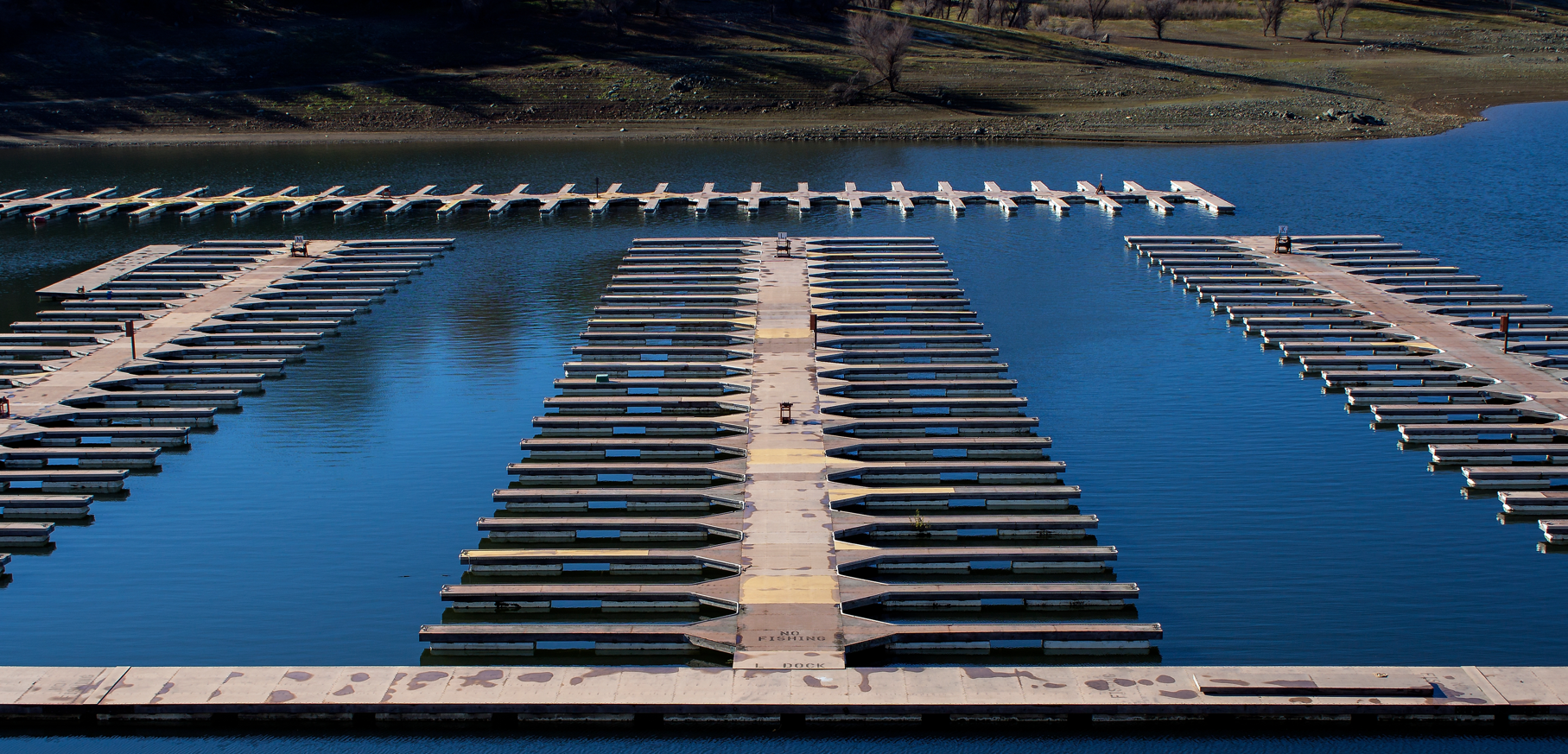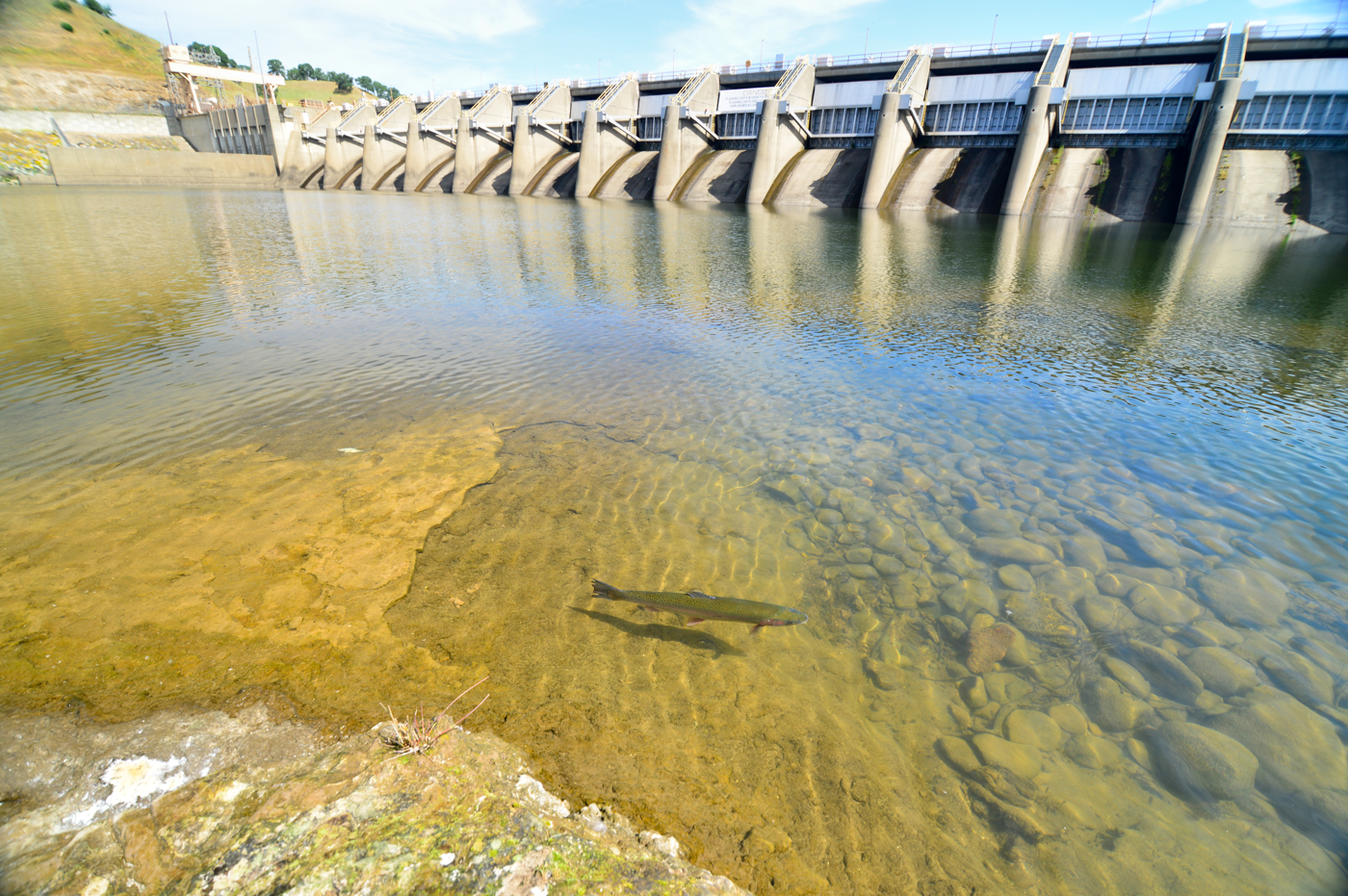Spring and early summer are a crucial time of year for the American River: It’s when we find out how much Sierra Nevada snowmelt will be available to fill Folsom Reservoir, and what that means for keeping river temperatures cool for imperiled salmon and steelhead.

While many Californians are getting used to the idea that rapidly changing climate conditions have made “extreme” the new normal, this year is unusual in a mundane way: It’s average! The 2023-2024 winter produced “nearly average” conditions, historically speaking, in the American River watershed, said Ashlee Casey, senior engineer at the Water Forum. That’s unusual because “average” is rare in California weather patterns and will continue to be so in this era of climate change when we are expected to swing dramatically between wet and dry conditions.
Luckily, “average” is better than most years for water temperatures in the river.
“When we have a year like this, we’re much more likely to provide at least suitable temperatures for the salmonids on the Lower American River. Suitable temperatures will lessen the stress for the fish and reduce detrimental impacts to their growth and productivity,” Casey said.
Folsom Reservoir is a low-elevation reservoir on the valley floor, and it’s also relatively small (about 970,000 acre-foot capacity). This means water stored in the reservoir, particularly in drought years, can warm up quickly. In the spring months it becomes stratified, meaning cold water from early snowmelt sinks to the bottom of the reservoir, while the upper layers warm up.
The volume of this deeper colder layer varies depending on spring runoff conditions. Generally speaking, with more water stored in Folsom Reservoir in the late-spring months, more cold water will be stored at the bottom. Water officials must carefully manage this cold water to ensure the river below the dam provides adequate cold-water habitat through summer and fall.
Folsom Dam’s outlet works include a set of temperature control shutters that allow water managers to release cold water at different elevations behind the dam. In other words, to a certain extent, they can choose what temperature to release, based on what fish need and the outlook for the rest of the year. This allows them, for example, to preserve the coldest water at the bottom of the reservoir to release late in the year, if that’s what conditions require.
Juvenile steelhead and chinook will rear on the Lower American River in the spring before heading out to the ocean by way of the Sacramento-San Joaquin Delta. However, some steelhead have been known to remain in the river for the summer months. In these rearing life-cycle stages, 68 degrees is understood to be the upper limit of suitable, while 65 degrees or cooler is optimal for the health of the fish.
In the spawning life-cycle stage, when the fish return to the Lower American River from the ocean, the fish need even colder water. The chinook arrive first in mid-October while the steelhead begin to arrive later in November and December. For chinook in particular, the early fall weather can still be quite warm, and the winter rains have yet to begin, and providing cold water in the river is particularly challenging. In this spawning life-cycle stage, water temperatures at 58 degrees or colder are optimal for them to successfully spawn.
The cold water pool at the bottom of Folsom Reservoir is crucial. The bigger that pool is, the more cold water is available to protect salmon and steelhead through the summer and fall months. This year, because of our average snowpack and spring rains, the cold water pool is also fairly average. And the reservoir is nearly full: On May 30, it was at 97 percent capacity and still rising.

In addition to benefiting the salmon and steelhead populations, the nearly full reservoir and remarkably average water conditions this year also bode well for people. Adequate water levels create opportunities for recharging groundwater, enhance recreational activities that boost our economy, and improve irrigation for agriculture, among other benefits.
Habitat enhancement projects, like those undertaken by the Water Forum, also play a crucial role in supporting fish survival. These efforts improve spawning and rearing habitats, further supporting the resilience and health of fish populations.
While this year wasn’t extremely wet like 2017, or extremely cold like last year, we are hopeful that maintaining suitable temperatures will go smoothly this year, and our native fish will reap the rewards. When Folsom Reservoir reaches its maximum storage level for the year in late May/early June, we are more likely to be able to provide suitable temperatures on the Lower American River.
“We know that maximizing late-spring storage puts us in a better position for temperature management,” Casey said. “That determines our cold-water pool for the rest of the year. We always have our eye on that.”

